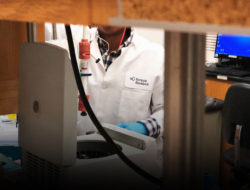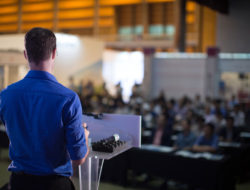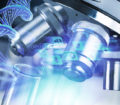1 Helping Heroes
What better use of San Diego’s rock-star scientists than improving the lives of veterans, 236,000 of whom live in our community. Local startup Benefunder makes it easy for anyone to get involved with funding the medical breakthroughs that can improve the lives of veterans, such as magnetic resonance therapy, used by UC San Diego’s Dr. Kevin Murphy to treat PTSD and depression.
Other Benefunder scientists are researching 3D printing to heal wounds and solutions for veterans transitioning to civilian life. Potential donors can learn about the scientists, their labs, and their previously published research, then allocate funds directly to the cause they’d like to see move forward. Benefunder says its method is eight times more efficient than applying for grants.
2 Sense4Baby
One of the most talked about Apple Watch apps has San Diegan origins. Sense4Baby, AirStrip’s wireless heart-rate monitoring system for expectant mothers, was initially researched at the West Health Institute. It can differentiate between the baby’s and mother’s heart rates, and enables doctors to remotely check on patients who have high-risk pregnancies. A separate unit lets parents hear their baby’s heartbeat through the watch.
3 Fueling the future
Remember when algae was the next big thing in fuel? As energy prices slump, alternative fuel companies are bring forced to innovate. Luckily, innovation is second nature to leading algae-as-fuel company Sapphire Energy, based in San Diego. Under the direction of newly hired Dr. Jim Astwood, senior vice president of product development, Sapphire is pivoting into the food and cosmetics sectors, converting algae to other products like health supplements and skin care. Guess they’ll soon be seeing even more green.
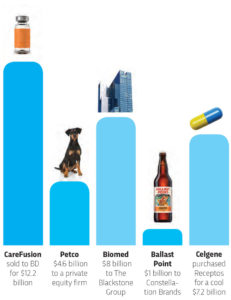
4 Who Wants to be a Billionaire?
More than a few San Diego companies joined the B club last quarter, selling for more than a billion dollars each.
- CareFusion sold to BD for $12.2 billion
- Petco – $4.6 billion to a private equity firm
- BioMed – $8 billion to The Blackstone Group
- Ballast Point – $1 billion to Constellation Brands
- Celgene purchased Receptos for a cool $7.2 billion
5 State of the startups
First Round Review surveyed 500 venture-backed founders around the country for its first state-of-the-industry report.
- 97% of Series A companies felt raising capital would become more difficult in the next 12 months.
- 44% of woman-led companies had a 50:50 gender ratio, compared to only 25% of those led by men.
- 73% say we’re in a bubble.
- #1 concern remains finding and hiring the best talent—even more important than fundraising.
6 From XX to $$
Mapping the human genome was one thing (a big, complicated, expensive thing), but now the real money is in interpreting all that DNA data and making it useful for patients. Ashley Van Zeeland, a rare female CEO in biotech, is leading the charge, having just sold her company, Cypher Genomics, to Human Longevity. Cypher’s software produces fast and accurate human genome data reports, making it a natural acquisition for the giant. Co-founded by the godfather of genomics, J. Craig Venter, HumanLongevity is currently creating the world’s largest database of human genome data. Just one more feather in the cap of mystartupXX, UC San Diego’s campus incubator for women entrepreneurs—and Van Zeeland’s proving ground.
7 Dreams wanted
Since the airport’s rental car agencies are moving to new digs along the Pacific Coast Highway, the Port of San Diego has a sweet little development opportunity on the former rental car lot on Harbor Island. With more than 50 acres of waterfront land with killer skyline views at stake, let’s hope some creative developers are dreaming up big ideas for the space.
8 Burgers, beers, and… jets?
Lindbergh Field is notoriously tricky for pilots to navigate, but also a spectacle for tourists and locals alike who watch in awe as planes land between the downtown skyscrapers and the bay. So who wouldn’t want to open a restaurant with a full view of the runway and the ships beyond? It appears to be a tough sell, as the restaurant space atop the new rental car terminal is still up for grabs after being listed for several months. Enterprise Brewery, anyone?
9 Biotech’s BIG Impact
$14.4B
The economic impact of the biotech industry (research, education, drug development and more) is equal to more than the money generated by 34 Comic-Cons and 33 U.S. Open golf championships.
10 “If a community has space for a tennis court, they have room for a 2.8 megawatt fuel cell. Cool, huh?”
—Dr. Byron Washom via eenews.net on the pair of new fuel cells powered by gas from the wastewater treatment plant in Point Loma. Washom is UC San Diego’s director of strategic energy initiatives (and the guy Larry Ellison hired to create the energy system on his private island).
11 Tweets with Topol
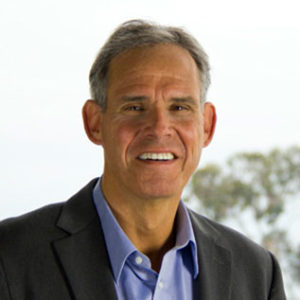
It’s worth joining Twitter just to follow this guy. He’s not that funny, and he doesn’t post pictures of his food, but he is a wowie-zowie scientist, physician, researcher, and author based at The Scripps Research Institute who’s famous for his studies of “the wellderly” (healthy older people). Here are just a few things we learned from his Twitter feed last month:
- A story on why doctors should not friend their patients on social media
- A link to Google’s efforts to digitize human beings (really!)
- How Uber-ing doctors to your home will soon be a thing
- A list of the top 10 tech advances that will change medicine
Seriously, follow him! @erictopol
12 8 Great (New) Spaces for Science
New science and innovation spaces are popping up everywhere, from Balboa Park to Carlsbad.
- SDSU’s EIS Complex: The Zahn Innovation Center and Lavin Entrepreneurship Center, under one roof
- Jlabs: Johnson & Johnson’s Janssen Labs incubator for emerging companies
- The Basement: A new incubator and co-working space for budding UC San Diego entrepreneurs
- Robotics Institute: 40 engineers will perform $10 million in robotics research at the new UCSD facility
- Thinkabit Labs: Three new Qualcomm STEM learning centers at San Diego middle schools
- Miramar College: The new $34-million science building has a greenhouse and an observatory
- Biotech & Beyond: A North County incubator aiming to make it easy to start science companies
- Art of Science: A learning incubator in Balboa Park funded by the National Science Foundation
13 The ABCs of DNA

Say someone added two new letters to the alphabet. Imagine how many new words and phrases we could create. That’s just what scientists at The Scripps Research Institute did for DNA. Their synthetic bases, X and Y, incorporate seamlessly with the natural A, T, G, and C bases that cells use to carry out the functions of life. Spin-off company Synthorx is now using this expanded genetic alphabet to generate new proteins for better drugs, diagnostics, and vaccines.
14 Google Fiber downtown
It’s always a good day when Google comes to town. On their last visit, head honchos came to talk about Google Fiber coming to our city. Cool; let’s do it! (And while we’re at it, let’s give a nod to our friends at Cox, who have offered the service since August.)
15 Exit Right
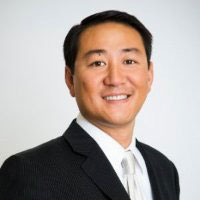
Michael Koh recently sold his startup company, real estate app Fypio. Here’s three things he’s learned about exiting right:
- Odds are, no one will love your “baby” as much as you do. A startup, in many respects, is like a baby. You raised it from an infant stage to maturity. It took a lot of blood, sweat, and tears to get it to the stage where someone wants to acquire it. You know and love your baby better than anyone. You have to come to terms with the fact that most companies will never love your company the way you do. It can be heartbreaking watching the acquirer destroy a company you took many years building up.
- Legal and accounting fees to sell a company are crazy expensive. There’s a mountain of paperwork involved in selling your company. The last two companies I sold were both international transactions where I had lawyers and accountants in two different countries. The amount of due diligence for legal and accounting can often take several months, and the fees can run into the hundreds of thousands. Lawyers are a necessary evil, so be prepared for some massive legal bills, even if you’re a relatively small company.
- Structure your company properly from day one. Because legal fees can add up tremendously, try to organize your company legally and properly from day one. I always tell my law and accounting firms to structure it so everything is transparent and buttoned-up, so any future acquirer can quickly and easily perform due diligence. Also, keeping everything straight from day one makes it much easier to raise funds.
16 Coming up Roses
In a win for what the founder affectionately calls a 25-year-old startup, the Garden Compass app now has the ability to connect users with gardening experts who can remotely identify plants and solve horticultural conundrums with personalized advice. Become a member, upload images from your garden, and get alerts on when and how to care for your plants.
17 Culture Club
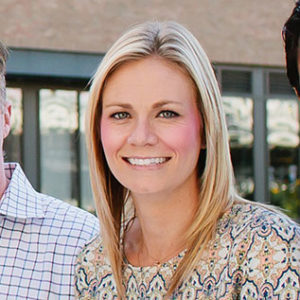
Stacy Mendes, Vice President of Culture at Underground Elephant, on how to keep that “cool company” vibe:
ACMs: Our twice-monthly all-company meetings rally around new hires, anniversaries, birthdays, departmental spotlights, and company-wide wins. We invite organizations like the Monarch School and community leaders like Todd Gloria to present to the team. It creates unity as a company and as a part of the downtown community.
Gamification: We divided our 90 employees into nine teams—diversified across department, job function, and tenure—that compete for prizes and prestige every quarter. All points are tracked on a massive board in the office.
Office Pranks: CEO Jason Kulpa once orchestrated a faux kidnapping of our entire executive team, chauffeuring them in limos to Double Deuce, where they rode the mechanical bull in front of the entire company. Our CTO, Keola Malone, is from Hawaii, so the night before his seven-year anniversary we dumped over 600 pounds of beach sand in his office, along with all kinds of inflated palm trees and aquatic life. Another time, Jarrod Russell, our director of public affairs, was going to Burning Man, so we surprised him with a care package with a bunch of “burner” gear, including a pair of boxers that read, “If found, please return to Underground Elephant.”
18 Benched
By Brian Orelli
Slick lab space does more than incubate new science. It facilitates funding, too. For a biotech startup, it’s nice to have friends with the money to make deals. And as Joseph Payne, founder and CEO of Arcturus Therapeutics learned, it’s a lot easier to make those acquaintances when you’re working on the same campus.
Arcturus started in 2013 in Janssen Labs, an incubator set up by Janssen Research & Development in Torrey Pines. JLabs provides office and research space, including shared equipment, to budding entrepreneurs. “The science we do is on the forefront. It’s pioneering; it’s cutting-edge stuff, so you can’t just outsource it,” Payne says. “JLabs offered us high-quality lab space with millions of dollars of equipment for relatively cheap.”
The location also helped Arcturus raise more than $6 million in capital during its first year of existence, mainly from wealthy private investors. “If they had come to a dumpy lab or my house, it would’ve been hard to convince them to invest in the company,” Payne says. “But because I was at JLabs—it’s quality lab space, and it really presents well. […] We make sure that science drives all of our decisions, and then the money follows after that, we find.”
19 Full STEAM Ahead!

If young Albert Einstein had not played the violin, would he have been able to develop the theory of relativity? Would Leonardo da Vinci have conceived of the helicopter if he wasn’t also a painter? If Steve Jobs had not become obsessed with calligraphy, would we have the Apple computer today?
Of course, we have no way of knowing for sure, but researchers have long agreed that there is a developmental link between the arts and sciences. A recent study by Michigan State University found that 93 percent of graduates in science, technology, engineering, and math (STEM) subjects had musical training at some point in their lives, as compared to only 34 percent of average adults.
The creativity and empathy developed through the arts help create better scientists; likewise, the problem solving and analytical skills used in science contribute to artistic development. But the arts have long been considered an educational luxury.
Recently, this mindset has started to shift. Even more exciting is that the evolution is taking place right here, in America’s Smartest City.
San Diego is one of the national leaders in a movement to add the arts to STEM, making it STEAM. In 2013, the San Diego County Office of Education and San Diego Science Alliance created a document detailing criteria necessary for a quality STEM education, with the help of educators and parents. This year, the group updated the rubric to include visual and performing arts standards.
The University of San Diego is among the first to offer a STEAM program as part of its online Master of Education degree. Entire school districts, like Del Mar Unified, are going from STEM to STEAM. San Diego legislators are taking notice, too. U.S. representatives Scott Peters and Susan Davis are active on the Congressional STEAM Caucus, which recently advanced the status of the arts in 100,000 schools.
By historically overlooking the importance of the arts, we have missed the opportunity to cultivate more great thinkers and innovators. We now know how mutually beneficial the arts and sciences can be to one another. We can’t reach a full understanding of one discipline without the insight gained through contrast with others. With this knowledge, how will we move forward? Will we continue to educate our youth the same old way? Or will we move full STEAM ahead to a brighter future?

KIM RICHARDS is a life sciences public relations pro turned STEAM advocate. She co-founded the STEAMConnect conference, coordinates the Arts + STEM Collaborative, and contributed to the statewide task force that developed California’s Blueprint for Creative Schools. Her consultancy works to make anything—companies, events, schools, nonprofits—more “STEAM-y.”
20 Don’t take my grease!
Thanks to a new bill signed by the governor, penalities are tougher for those caught stealing from restaurant grease traps. The waste is a hot commodity, as companies like San Diego–based New Leaf Biofuel develop ways to turn it into fuel. One hundred pounds of grease could fetch several hundred dollars on the black market.
21 The surfing lawyer

Only in San Diego does business development happen at the beach. Of course, it helps when your clients make slick surfboards and need to secure IP. Mintz Levin IP attorney James Cleary was recently profiled by The American Lawyer for his work not only in patenting new designs for Hydroflex surfboards, but also in trying them out firsthand. Learning to surf paid off in a big way, as Cleary got to know the community and landed other big clients, like Kelly Slater’s artificial wave company. Now that’s hanging way more than ten!
Tags: Innovation, Startups, Tip Sheet












